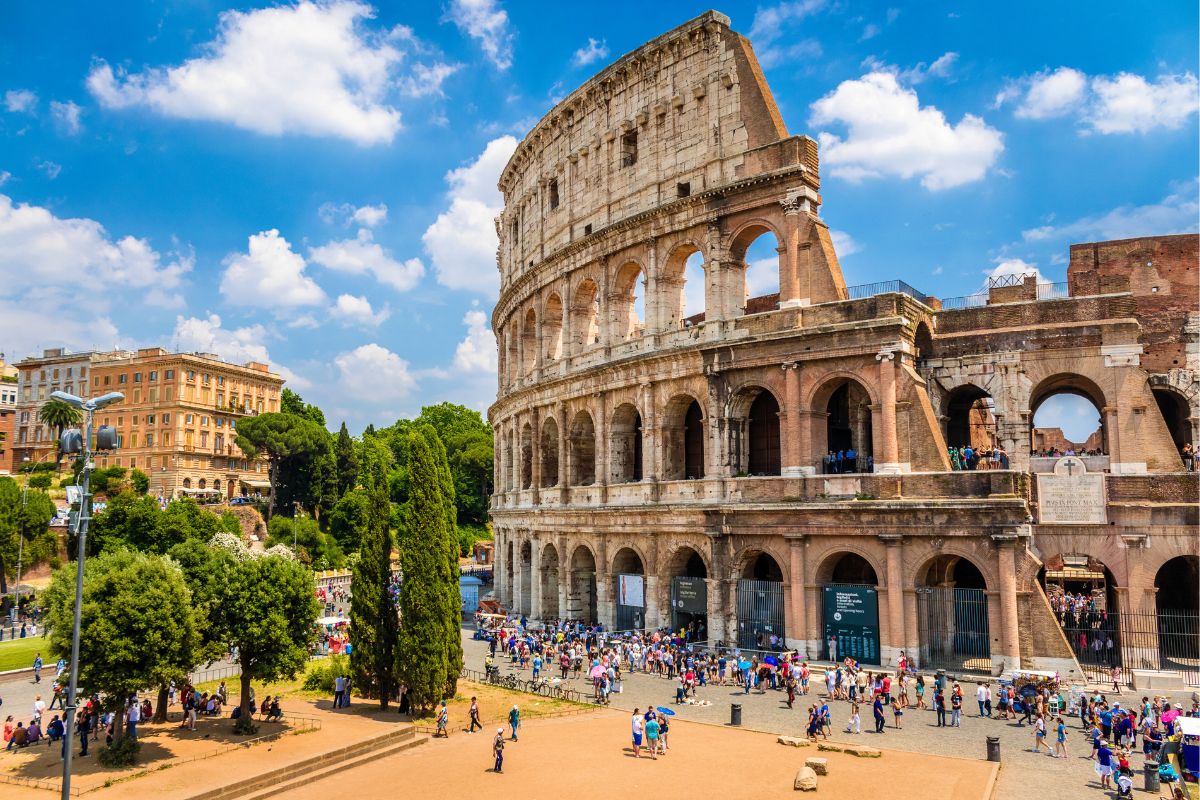Are you looking for Colosseum last-minute tickets? Would you like to book a tour of the Arena and Underground of the Colosseum, but it’s sold out?
Don’t worry. There’s still hope! Read on about how to find Colosseum last-minute tickets when it’s sold out on the official website.
Are you ready to book your Colosseum ticket now? Go ahead and book your ticket, or continue reading to learn more about last-minute Colosseum tickets.
How to find Colosseum last-minute tickets if sold out

As you may have seen on the Colosseum’s official website, tickets often sell out weeks or months before the visiting date, and it is almost impossible to get a ticket last minute. You really need to book your tickets in advance. We recommend at least one to four months ahead of time, depending on the season.
However, the good news is that there are other sources to find and book Colosseum tickets. Some may even have tickets still available for your preferred visiting date.
There are dozens of different websites offering last-minute ticket and tour options. Sorting through all these pages can be overwhelming. That’s why TourScanner aggregates them all, so you can easily find and book your tickets.
If you don’t find any Colosseum tickets on TourScanner for your preferred date, they must be completely sold out. However, your trip to Rome is not ruined! You can still visit the Colosseum by booking a guided tour.
Read more about Colosseum tickets Price
Kind of tickets available and price
1. Standard Ticket
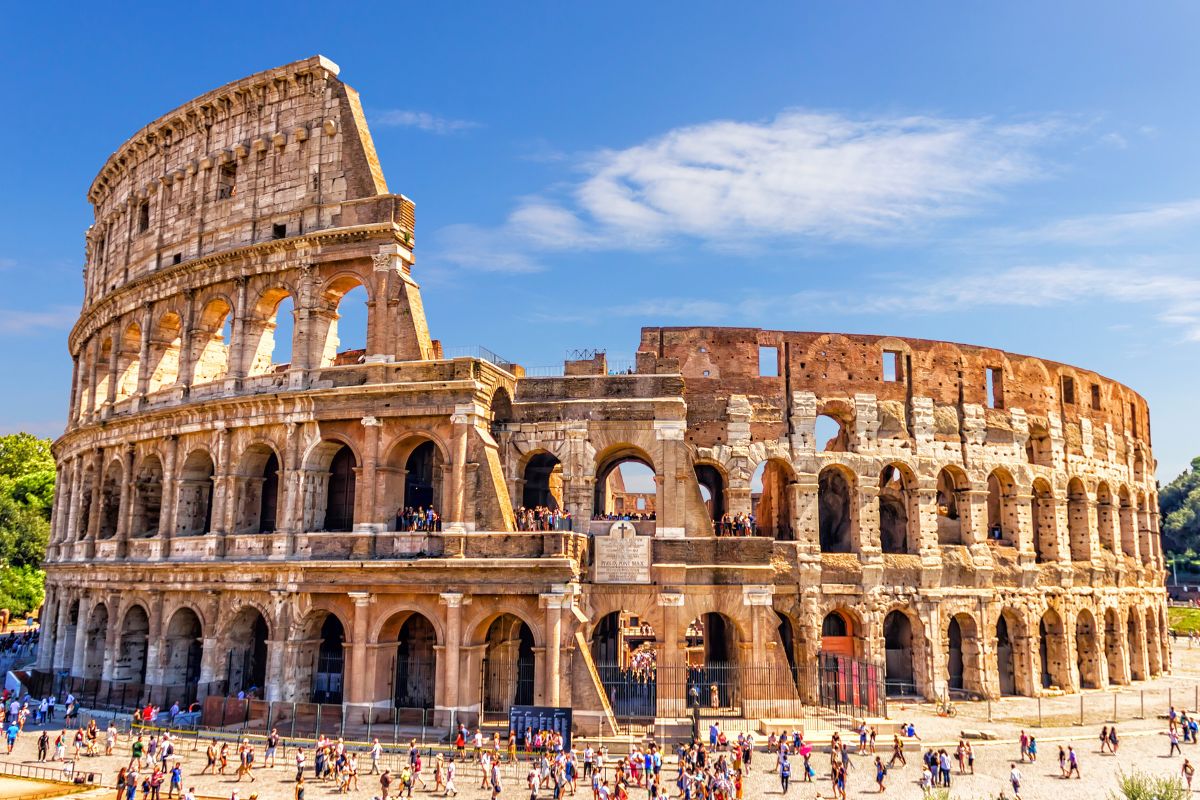
Standard tickets for the Colosseum must be purchased online in advance for a designated day and time. These tickets provide access to the Colosseum, Roman Forum, and Palatine Hill for one day. However, please note that the Gladiator Arena and Underground areas are not included in the standard ticket.
- Standard Colosseum ticket price: 18€
- Reduced Colosseum ticket price for EU citizens under 25 (included until the day after their 25th birthday): 2€
- All EU citizens under 18 and people with disabilities plus one companion have free admission.
For booking Colosseum tickets, the official website or third-party ticket providers are available online. These options are ideal for last-minute tickets and for bundling a guided tour with your entry ticket.
The standard Colosseum ticket grants access to the Colosseum, Roman Forum, and Palatine Hill. The ticket is valid for 24 hours, allowing a single entry to each site. Once you leave the Colosseum, you cannot return, even if 24 hours haven’t passed yet.
2. Full Experience Ticket: Gladiator Arena
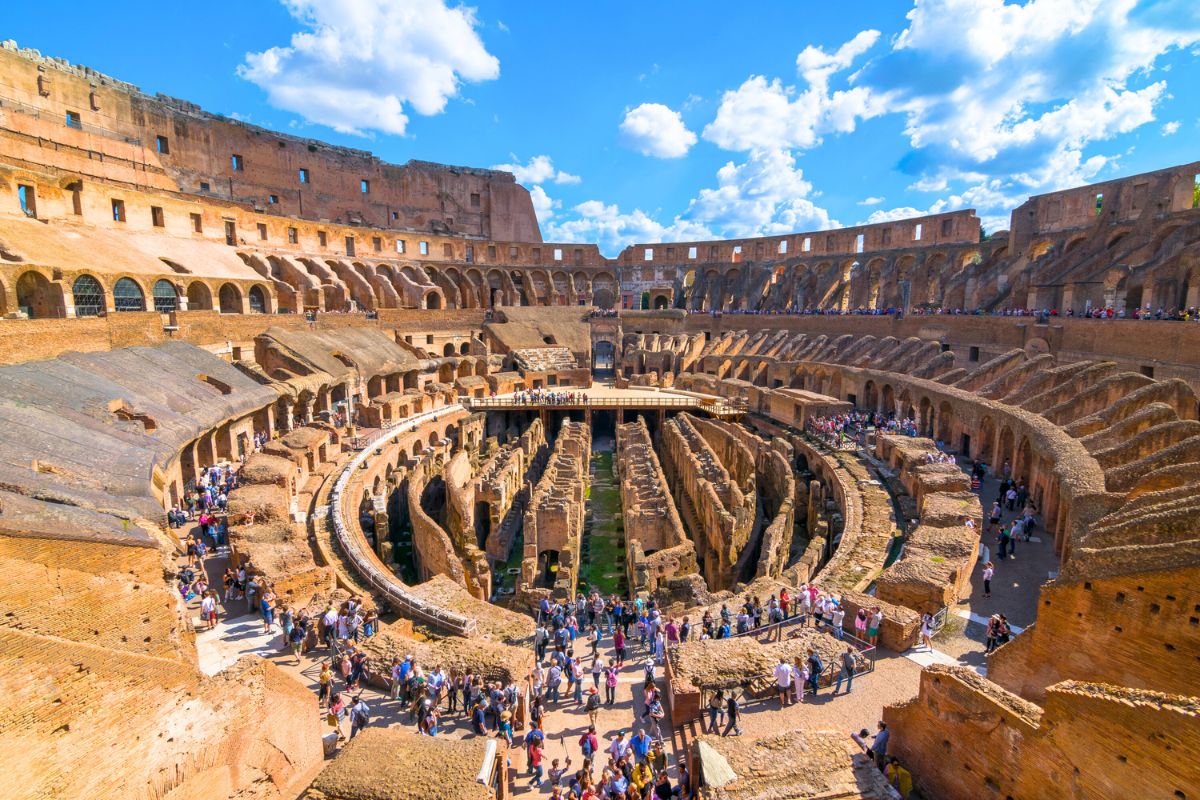
The Colosseum’s Gladiator Arena is not accessible to the general public. Entry to the Arena is only available with Full Experience tickets or through a guided tour.
The Full Experience Colosseum Ticket includes all features of the standard ticket, along with access to the Arena and Underground areas, as well as four additional sites in the Roman Forum not included in the standard ticket.
Within the Roman Forum, you will also have access to the Oratorio dei Quaranta Martyrs, Palatine Museum, Schola Praeconum, and the exterior of the House of Augustus.
- Full Experience Colosseum ticket price: 24€
- Reduced ticket price for EU citizens under 25 (included until the day after their 25th birthday): 4€
- All EU citizens under 18 and people with disabilities plus one companion have free admission.
As part of a guided tour, you’ll be taken to a different entrance of the Colosseum, following in the footsteps of the ancient gladiators who once walked through this very path nearly 2,000 years ago.
Guided tours also offer the option to visit the arena, along with the Roman Forum and Palatine Hill, and typically include both the ticket and a knowledgeable guide.
3. Full Experience Ticket: Underground Chambers
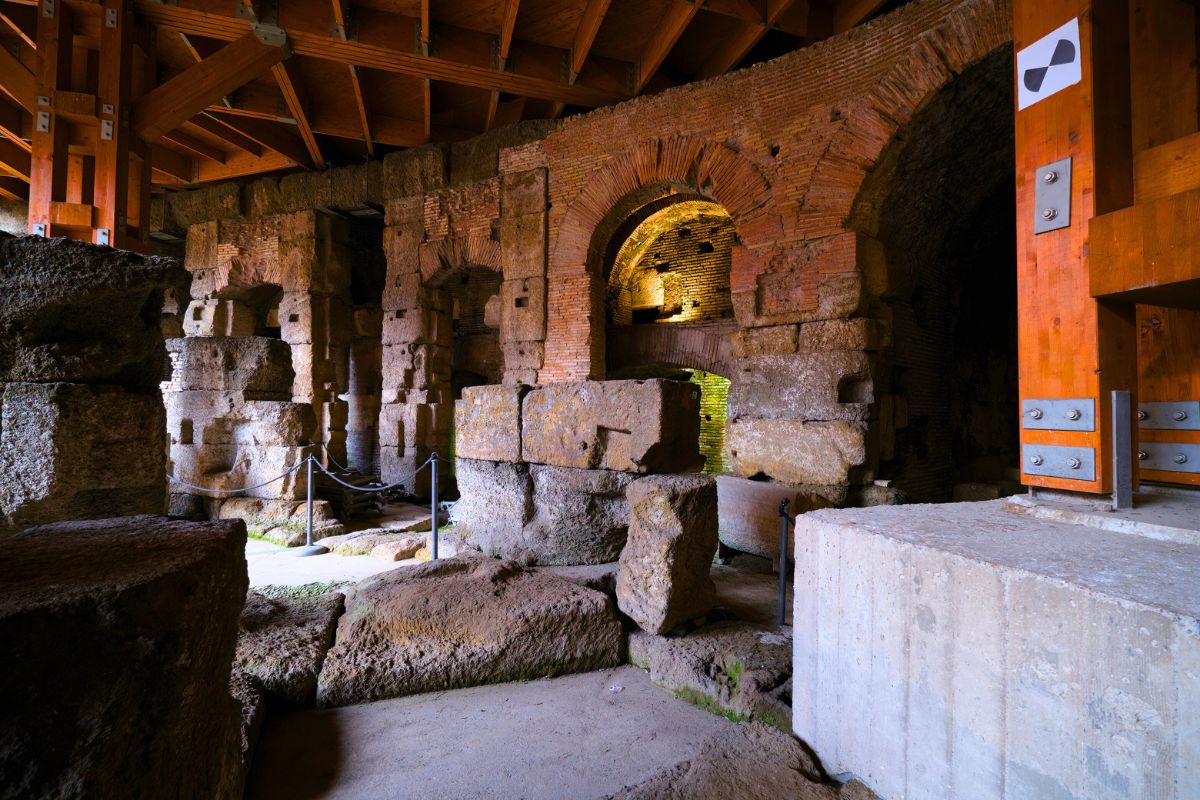
The Full Experience Colosseum Ticket grants access to the Colosseum’s underground areas, which opened to the public in 2021. These chambers were once used by gladiators and exotic animals, waiting for their entrance to the arena through hidden trap doors.
Entry to the Underground Chambers is exclusively available with Full Experience tickets or as part of a guided tour, offering a unique experience.
The Full Experience Colosseum Ticket includes all features of the standard ticket, as well as access to the Arena and Underground areas, and four additional sites in the Roman Forum not covered by the standard ticket.
In the Roman Forum, you will also have the opportunity to visit the Oratorio dei Quaranta Martyrs, Palatine Museum, Schola Praeconum, and the exterior of the House of Augustus.
- Full Experience Colosseum ticket price: 24€
- Reduced ticket price for EU citizens under 25 (included until the day after their 25th birthday): 2€
- All EU citizens under 18 and people with disabilities plus one companion have free admission.
Guided tours that cover the Colosseum and its underground chambers, along with Palatine Hill and Roman Forum, are available.
The cost of these underground tours varies depending on the tour provider, duration, and inclusion of other sections.
4. Tickets with Belvedere Top Level Access
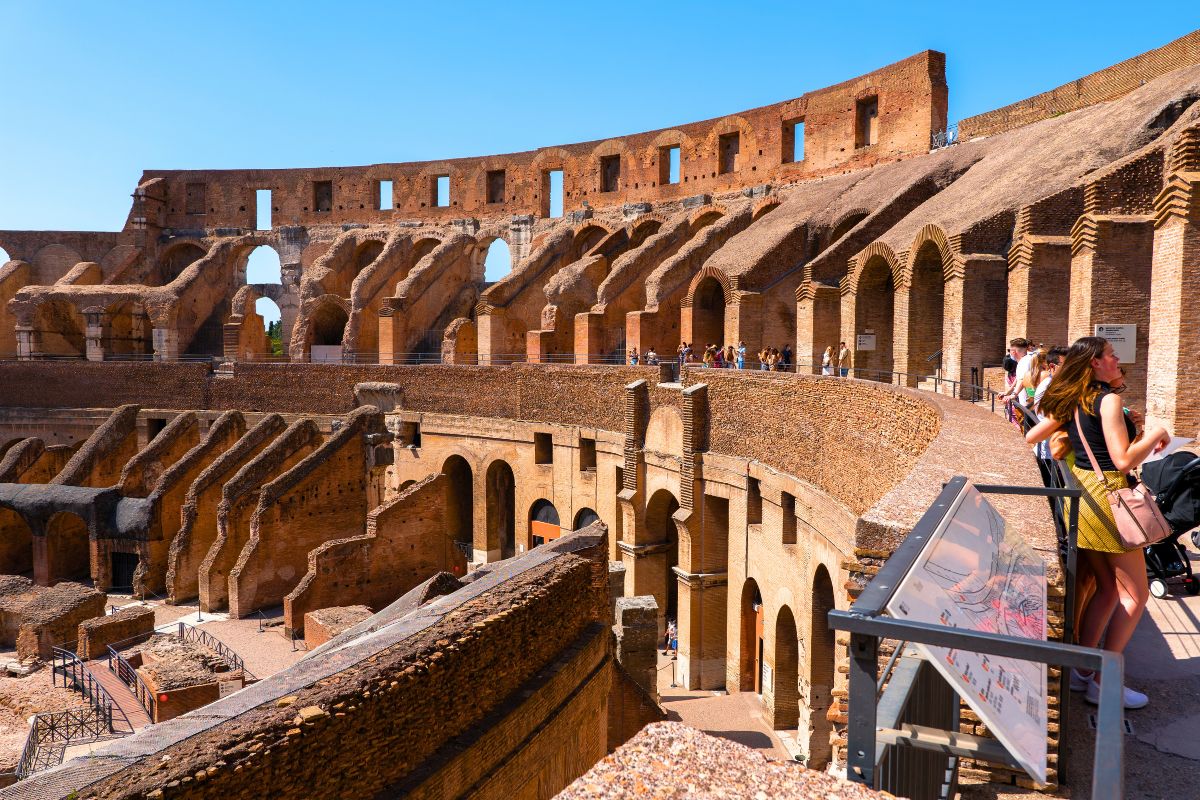
The upper decks of the Colosseum offer a breathtaking panoramic view of the Roman skyline, and are known as the Belvedere, meaning “beautiful view” in Italian.
In 2017, the 3rd, 4th, and 5th tiers were opened to the public, but access is limited and requires booking a tour. Only guided tour groups are allowed to enter the Belvedere Top Level.
Tour prices vary depending on the provider, with options for group tours or private visits. Some tours may also include other restricted sections of the Colosseum, such as the Gladiator’s Arena and the Underground.
5. Colosseum At-Night Tickets
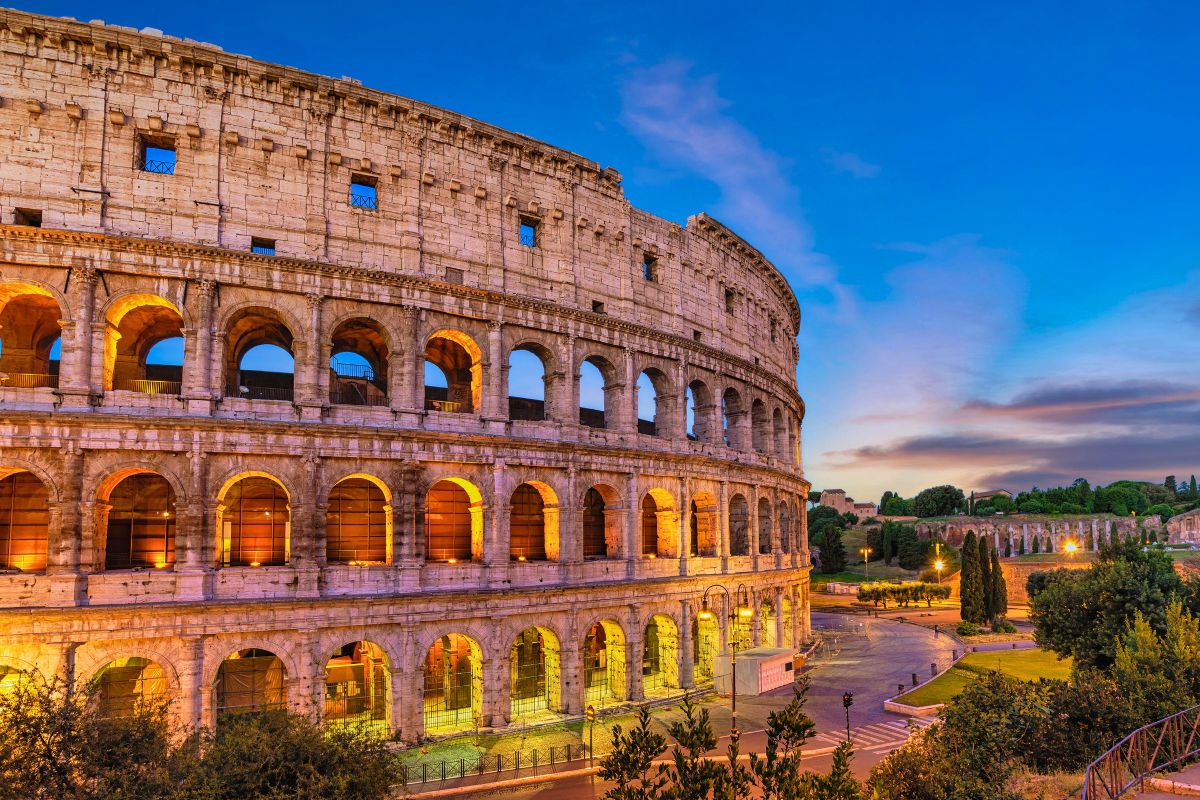
Explore the Colosseum after sunset with an exclusive experience that grants access to the Underground Chambers and Gladiator Arena, as it’s closed to the general public during that time.
Nighttime visits to the Colosseum are only available as part of a guided tour, and tickets tend to sell out quickly. To secure your spot for this unique experience, be sure to book in advance.
What to see at the Colosseum

During your visit to the Colosseum, the sections of its interior and exterior that you can explore will be determined by your ticket or tour. The Roman Forum and Palatine Hill, which are located nearby, are typically included in all ticket types for admission.
However, for exclusive areas such as the Gladiator Arena and the Underground, a special ticket is required. Additionally, the Belvedere Upper Levels can only be accessed as part of a guided tour. It’s important to be aware of these distinctions and plan accordingly to ensure you have the appropriate tickets or tours for the areas you wish to visit.
The Colosseum
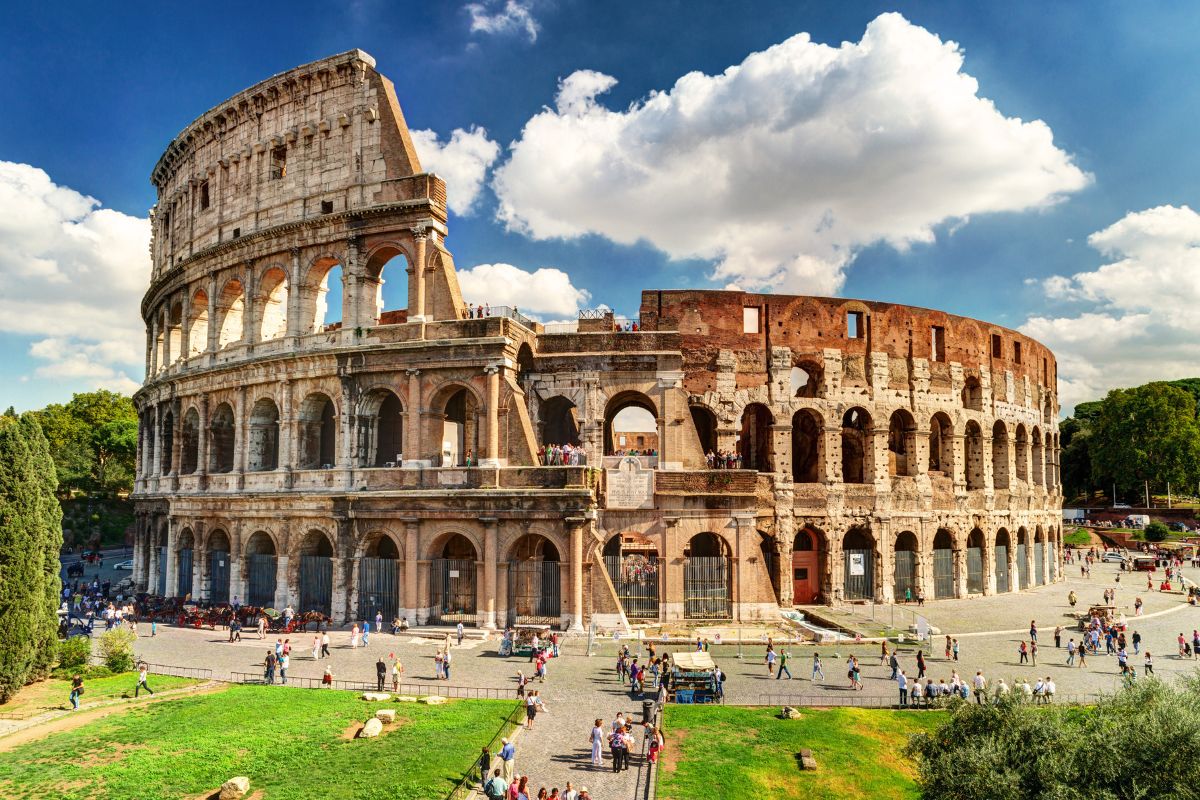
Built with volcanic tuff, brick-faced concrete, and travertine, the Colosseum is the world’s largest amphitheater and a top tourist destination, drawing over 7 million visitors annually.
Why does the Colosseum attract so many visitors? Well, as the name suggests, it’s colossal, giant, and humongous! In its prime, this iconic landmark could accommodate up to 80,000 spectators, who gathered to witness epic gladiator fights and even naval battles brought to life. Talk about making a splash!
To accommodate such grand spectacles for massive crowds, the Romans constructed this monumental amphitheater, which still dominates the city skyline even after nearly 2,000 years of existence. It’s no wonder that the Colosseum remains a must-visit site for travelers from all over the world.
Inside the Colosseum

Upon entering the Colosseum, you will discover various sections to explore, each offering its own unique experience.
You can begin by walking around the exterior and ascending from the lower to higher seating areas, marveling at the grandeur of this ancient amphitheater. For those who have booked tickets or a tour with exclusive access, a rare opportunity awaits to descend to the center of the arena and venture further down into the mysterious underground hypogeum.
Much like modern stadiums, the Colosseum had distinct seating sections that were divided into four tiers, determining the proximity to the thrilling action below.
The first tier, located closest to the arena, provided the most coveted views and was exclusively reserved for esteemed individuals such as senators, the Emperor, and his revered Vestal Virgins.
The second tier was designated for the non-senatorial noble class and the distinguished Roman knights, who would take their seats with a sense of pride and privilege. The third tier was reserved for the affluent citizens and those who held respected professions, including heralds, soldiers, priests, and scribes, who could witness the spectacle from a slightly elevated vantage point.
Finally, the fourth tier, situated at the very top of the Colosseum, was often referred to as the “nosebleed” seats, where slaves, women, and the lower classes would enthusiastically cheer from, embracing the energy and excitement of the arena.
As you explore the different sections of the Colosseum, you can imagine the diverse audience that once filled its grandstands, each with their unique perspective and experience of the awe-inspiring spectacles that unfolded in this ancient architectural marvel.
The Arena and the Hypogeum
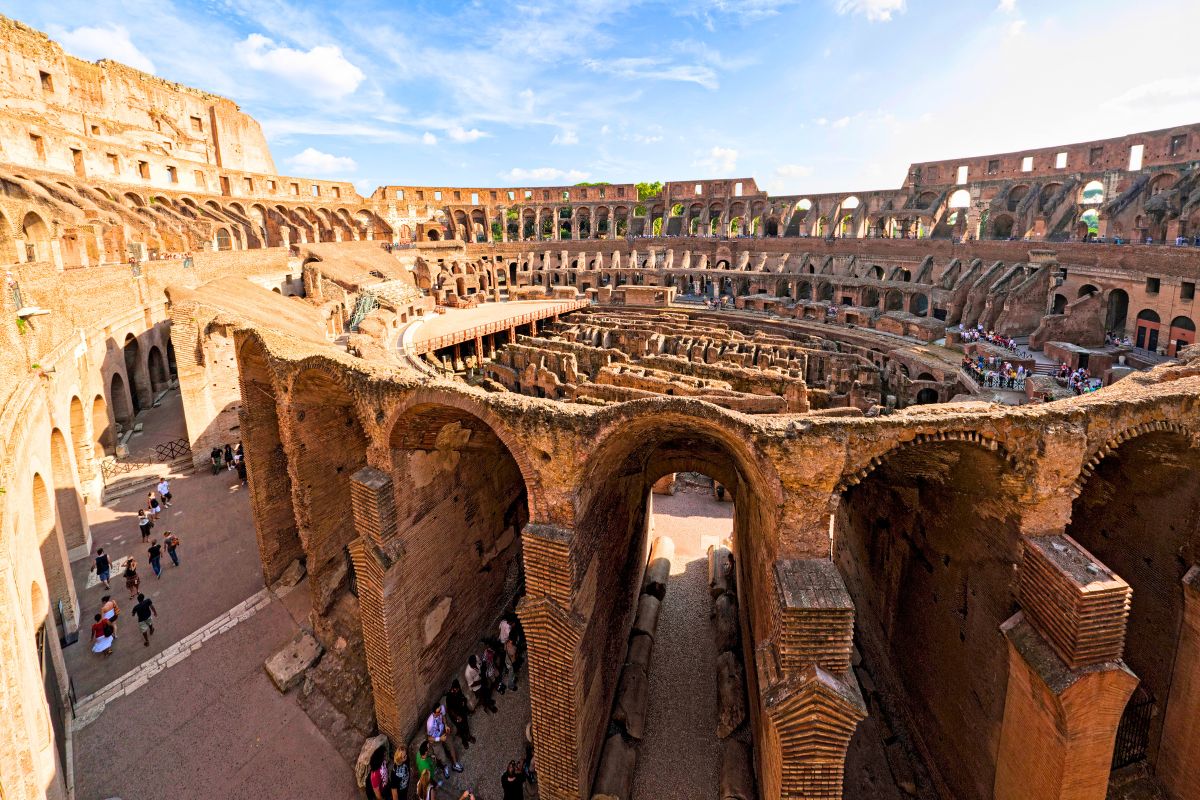
The center stage of the Colosseum, equivalent in size to a modern football field, was once covered in sand, aptly referred to as “arena” in Latin. This sandy surface concealed a wooden platform and trap doors underneath, creating an illusion of bears, tigers, and other exotic creatures appearing seemingly out of thin air.
Beneath the arena lies the remnants of the “hypogeum” – an intricate system of underground tunnels used by performers and animals to move around the Colosseum, hidden from the view of spectators.
It’s worth noting that standard Colosseum tickets typically do not grant access to the arena or the hypogeum. To explore these fascinating areas, be sure to book Full Experience Colosseum tickets or opt for a Colosseum tour, as all tours include exclusive access to the arena and the hypogeum. Unravel the secrets of this ancient amphitheater and immerse yourself in its rich history with these special arrangements.
Hot tip: Don’t miss our complete guide about the best Colosseum tours.
Outside the Colosseum

Approaching the Colosseum, the first thing that catches your eye is the Arch of Constantine, the largest arch in Rome, though it may seem petite next to the mighty Colosseum.
Gazing up at this grand amphitheater, you can admire the nearly 100 arches supported by massive columns and imagine how the crowds of spectators must have shuffled in and out during the events of the day.
The outer wall of the Colosseum required a staggering amount of travertine, over 100,000 cubic meters, held together by 300 tons of iron clamps. Remarkably, despite its immense scale, the Colosseum was constructed in less than a decade and hosted its first events in 80 AD.
As you observe the Colosseum closely, you’ll notice that it is no longer fully intact. A major earthquake in 1349 caused severe damage to the structure, and much of the fallen stone was repurposed to rebuild churches, palaces, hospitals, and other buildings in the affected area.
Throughout history, the Colosseum has served various purposes. After the fall of the Roman Empire, it was used as a fortress, quarry, and even housing at times. Despite this, the Colosseum has been regularly restored over the centuries, standing today as an iconic symbol of the immense wealth and power once wielded by the Roman Empire.
Adjacent to the Colosseum, other buildings once stood, including a gladiator school, storage rooms for armor and machinery, an infirmary for injured gladiators, and a “spoliarium” where the bodies of defeated gladiators were kept. These remnants are a testament to the rich history and significance of this awe-inspiring ancient structure.
The Roman Forum

The Roman Forum spans approximately two hectares, stretching from the Colosseum to the Piazza Venezia. Within its grounds, you can explore aqueducts, churches, smaller forums, and even the tomb of the legendary founder of Rome, Romulus.
If you’re on a Colosseum tour or have booked Full Experience Colosseum tickets, you’ll have exclusive access to certain sites within the Roman Forum. These include Santa Maria Antiqua, the Oratory of the Forty Martyrs, the Temple of Romulus, the House of Augustus, the Rampa of Domitian, and the Curia Iulia.
Palatine Hill

Palatine Hill is renowned as the most significant of Rome’s seven hills, as it was the site where the city was founded in the 9th century BC. To reach Palatine Hill, you can walk up from the Roman Forum towards the Circus Maximus, following the relatively new routes around the hill.
Starting at the Severian Arcades, you can pass by the Domus Augustana and make your way to the Paedagogium. From there, continue to the southwest slope of the hill, where you’ll find the exact spot where Romulus is believed to have founded Rome at the Circus Maximus.
Historical facts
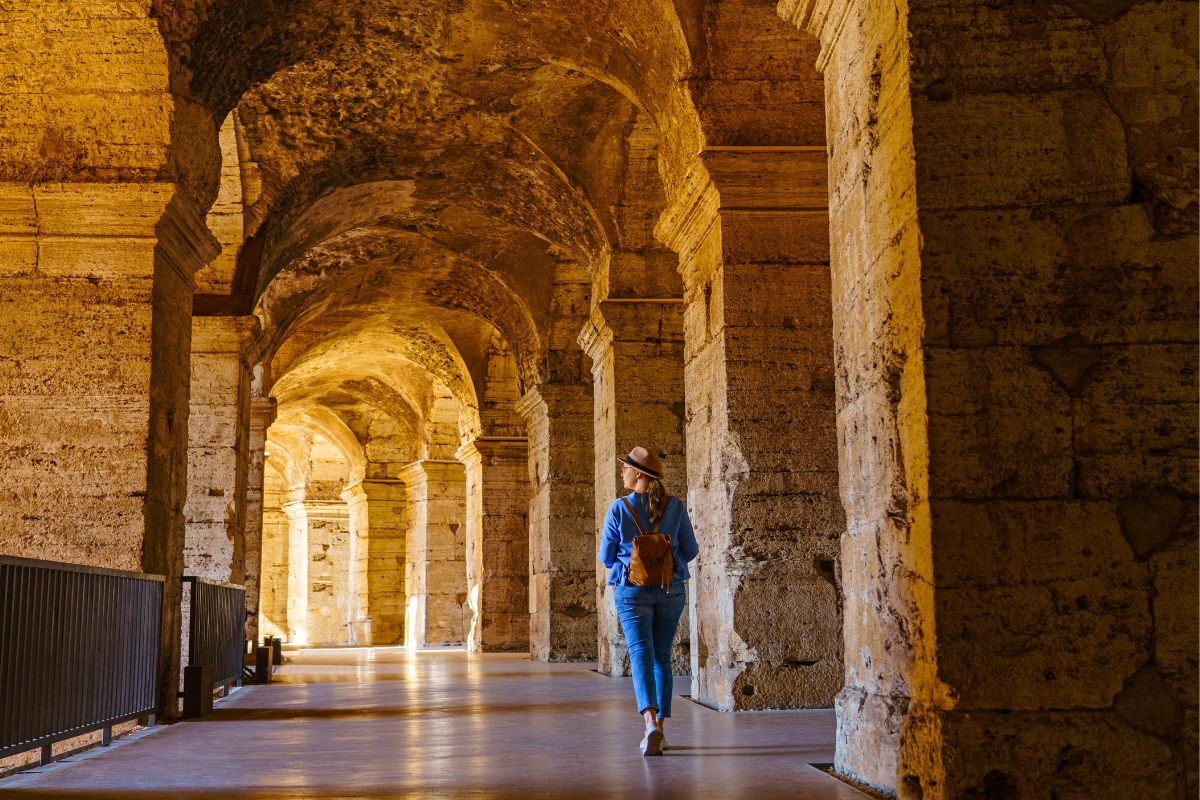
- The construction of the Colosseum took ten years, starting in 70 AD and was completed in 80 AD.
- The amount of marble used for the Colosseum was estimated at 100,000 cubic meters.
- Some parts of the Colosseum were used to construct St Peter’s Basilica and other monuments in Rome.
- Several natural disasters devastated its structure, but the earthquakes of 847 AD and 1231 AD caused most of the damage.
Architecture
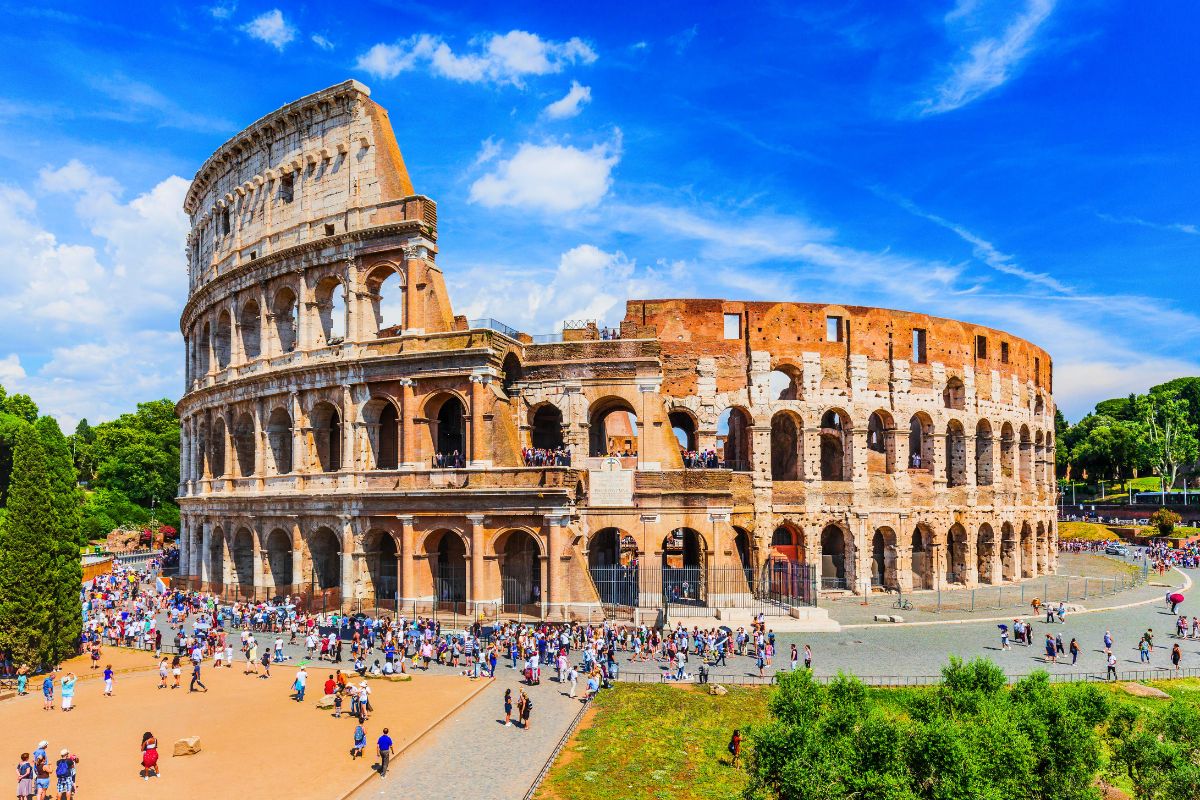
- This is the largest amphitheater in the world and has over 80 entrances.
- The Colosseum could once accommodate over 50,000 spectators.
- There were 36 trap doors allowing for elaborate special effects.
- The underground area beneath the arena was called the Hypogeum and consisted of a two-level subterranean network of tunnels and 32 animal pens.
Gladiators and Games
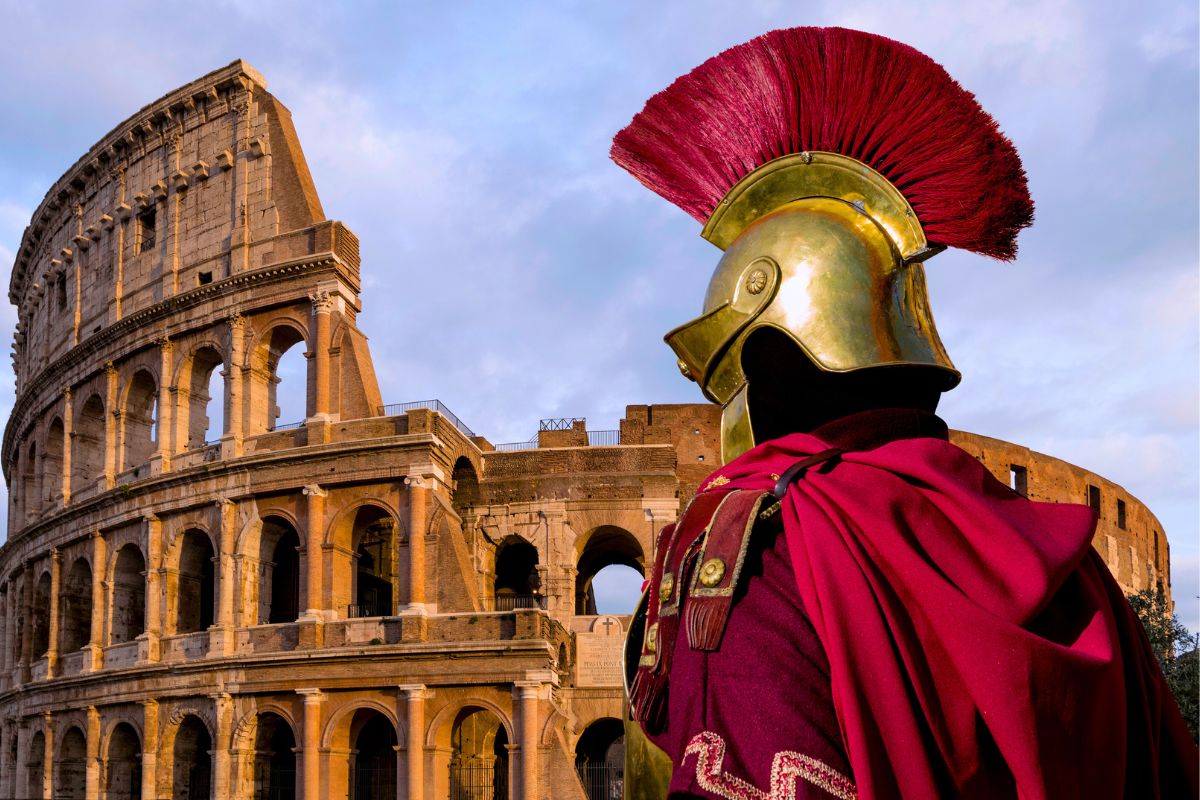
- In Roman society, gladiators were marginalized and had no rights of citizenship (in other words, they were slaves). They were both admired and reviled by the Romans.
- In 80 CE, during the inaugural games of the Colosseum held by Titus, 9,000 wild animals were slaughtered.
- The games could last up to 100 days.
- The Colosseum was used for gladiatorial fights and public spectacles such as animal hunts, mock sea battles, miniature ship naval battles, and re-enactments of famous battles, executions and dramas.
- In 107 CE, Emperor Trajan is said to have celebrated his victories in Dacia with contests involving 11,000 animals and 10,000 gladiators within 123 days.
- The last gladiatorial fights happened in 435 CE, and the last animal hunts stopped in 523 CE. This was mainly due to the cost of procuring animals and gladiators and maintaining the expensive facility.
- According to historians, about half a million people and over a million wild animals lost their lives over the course of a few centuries inside the Colosseum.
Other facts
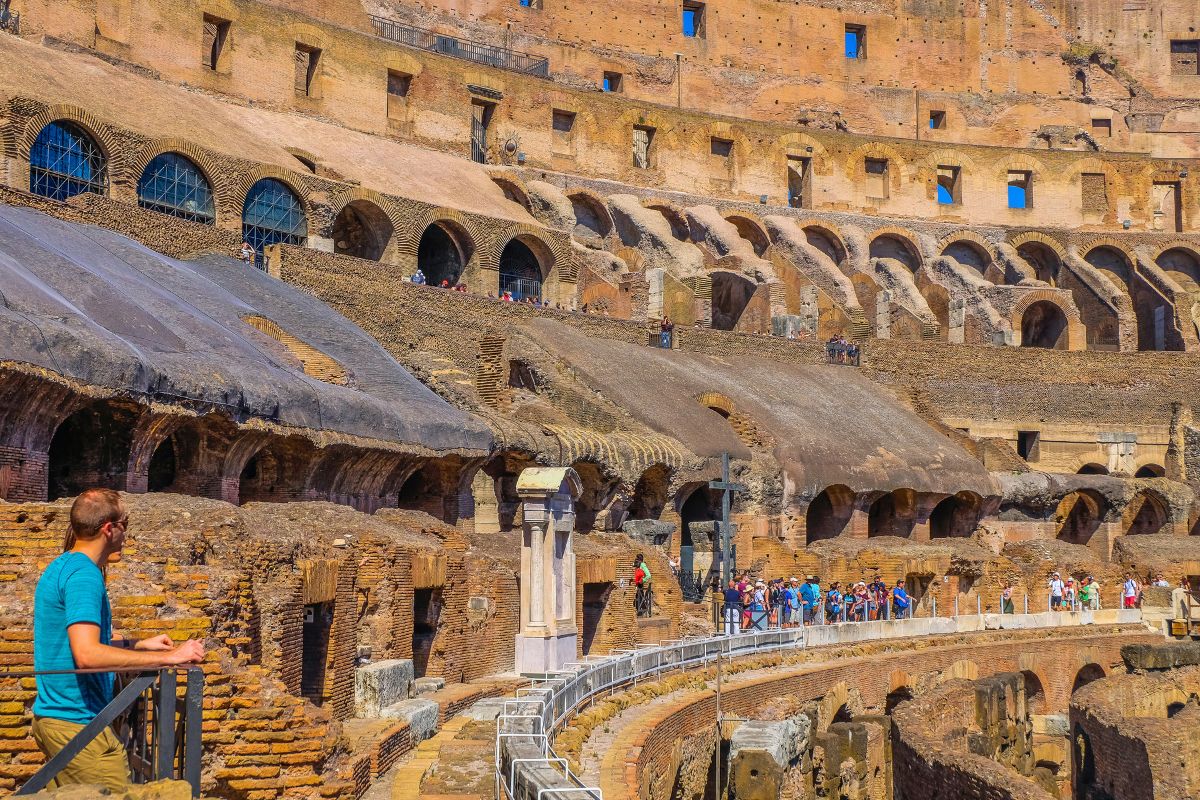
- Romans had free entry to enter the Colosseum and were also fed throughout the shows. As the Roman poet Juvenal once reflected, “the People…anxiously hope for just two things: bread and circuses.”
- The first name of the Colosseum was Flavian Amphitheater, after the Flavian Dynasty of Emperors.
- Rome’s most famous monument was built for three reasons: as a gift to the Roman citizens from the Flavian Dynasty to increase their popularity, to stage various forms of entertainment, and to showcase Roman engineering techniques to the world.
Travel Tips
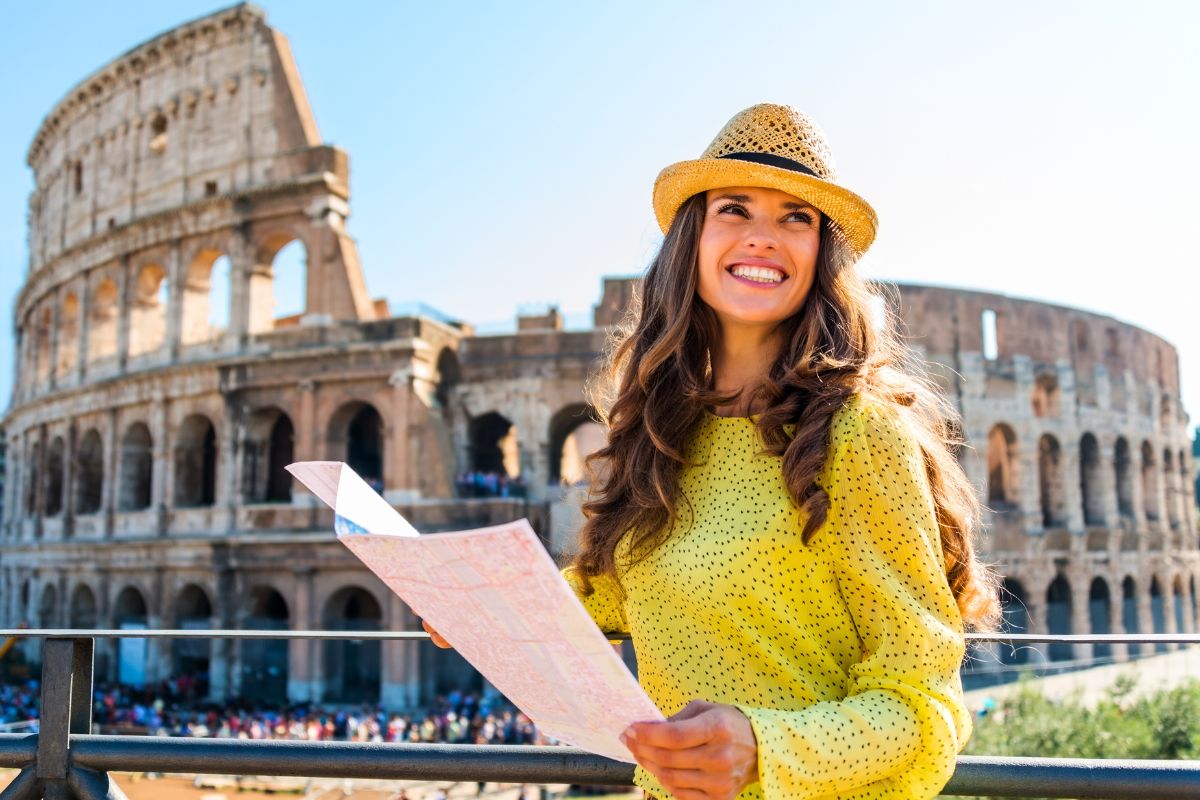
- Be cautious of scams and avoid purchasing tickets from random ticket sellers near the Colosseum. To ensure a legitimate and reliable transaction, it’s advisable to use TourScanner to compare deals from trustworthy online ticket providers.
- Be prepared for strict security measures at the Colosseum, as large backpacks or bags, glass bottles, and sharp objects are not allowed inside.
- Travel light when visiting the Colosseum, as there is no cloakroom available. You will need to carry everything you bring with you inside the monument.
- Before your visit to the Colosseum, be sure to thoroughly review the conditions of your tickets and tours. When booking online, inquire about the terms and conditions associated with your tickets.
- When visiting the Colosseum, make sure to wear comfortable walking shoes. Keep in mind that the entire site is ancient, including its walkways, which can be bumpy and uneven.
- It’s essential to always carry your ID or passport, especially if you intend to enter the Colosseum with free or discounted tickets. This is because you may be required to provide identification to verify your eligibility for discounted or free admission.
- Plan to arrive early at the Colosseum, preferably at least 30 minutes before your timed visit. The area around the Colosseum can be crowded, and it may take some time to locate your guide at the designated meeting point.
- Enjoy your visit to the Colosseum. We hope this guide will be helpful in making the most of your visit! Divertiti! ??️

